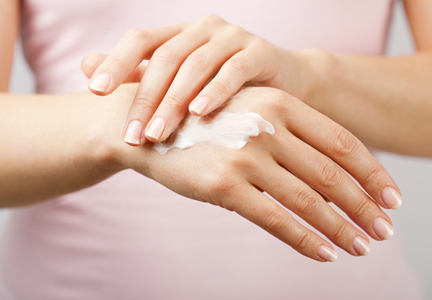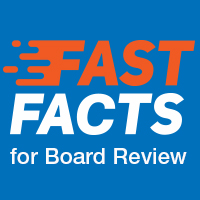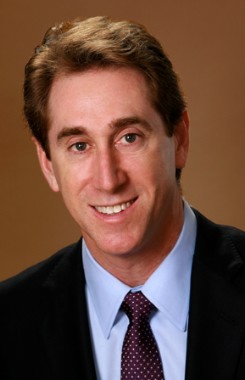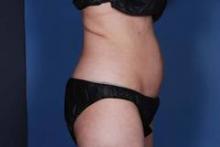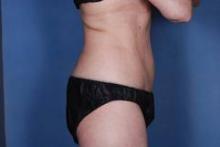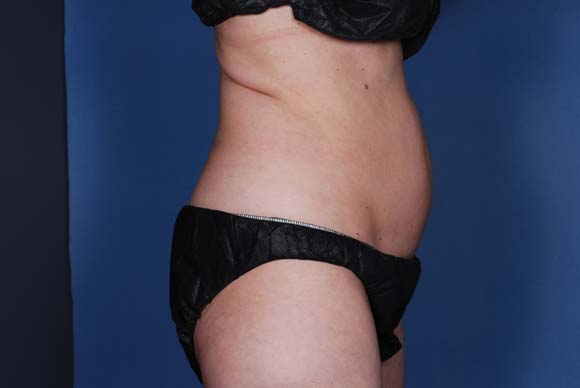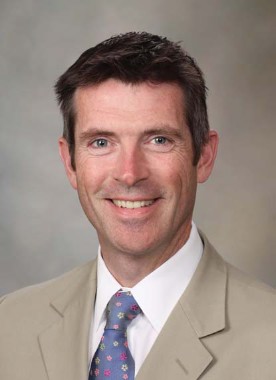User login
Cosmetic Corner: Dermatologists Weigh in on Body Moisturizers
To improve patient care and outcomes, leading dermatologists offered their recommendations on the top body moisturizers. Consideration must be given to:
Valeant Consumer Products, a divison of Valeant Pharmaceuticals North America LLC
"Very elegant with good barrier repair."—Jeffrey M. Weinberg, MD, New York, New York
Galderma Laboratories, LP
"This is a great general moisturizer and great for those with atopic skin. The added ceramides help to promote proper epidermal barrier function. The product does not have a greasy feeling, which is great for all year-round.”—Anthony M. Rossi, MD, New York, New York
Pierre Fabre Dermo-Cosmetique USA
"I recommended Trixéra emollient cream because it is safe to use even on infant skin. It is a very soothing cream just as soon as it is applied. It restores skin's natural barrier because of the key ingredient Sélectiose, which aids in the reduction of hypersensitivity and inflammation of the skin." —Marta I. Rendon, MD, Boca Raton, Florida
Beiersdorf, Inc
Recommended by Marian Northington, MD, Birmingham, Alabama
Beiersdorf, Inc
Recommended by Deborah S. Sarnoff, MD, New York, New York
Kiehl's
Recommended by Gary Goldenberg, MD, New York, New York
Cutis invites readers to send us their recommendations. Shampoos, scar treatments, and men’s cosmetics will be featured in upcoming editions of Cosmetic Corner. Please e-mail your recommendation(s) to msteiger@frontlinemedcom.com.
Disclaimer: Opinions expressed herein do not necessarily reflect those of Cutis or Frontline Medical Communications Inc. and shall not be used for product endorsement purposes. Any reference made to a specific commercial product does not indicate or imply that Cutis or Frontline Medical Communications Inc. endorses, recommends, or favors the product mentioned. No guarantee is given to the effects of recommended products.
To improve patient care and outcomes, leading dermatologists offered their recommendations on the top body moisturizers. Consideration must be given to:
Valeant Consumer Products, a divison of Valeant Pharmaceuticals North America LLC
"Very elegant with good barrier repair."—Jeffrey M. Weinberg, MD, New York, New York
Galderma Laboratories, LP
"This is a great general moisturizer and great for those with atopic skin. The added ceramides help to promote proper epidermal barrier function. The product does not have a greasy feeling, which is great for all year-round.”—Anthony M. Rossi, MD, New York, New York
Pierre Fabre Dermo-Cosmetique USA
"I recommended Trixéra emollient cream because it is safe to use even on infant skin. It is a very soothing cream just as soon as it is applied. It restores skin's natural barrier because of the key ingredient Sélectiose, which aids in the reduction of hypersensitivity and inflammation of the skin." —Marta I. Rendon, MD, Boca Raton, Florida
Beiersdorf, Inc
Recommended by Marian Northington, MD, Birmingham, Alabama
Beiersdorf, Inc
Recommended by Deborah S. Sarnoff, MD, New York, New York
Kiehl's
Recommended by Gary Goldenberg, MD, New York, New York
Cutis invites readers to send us their recommendations. Shampoos, scar treatments, and men’s cosmetics will be featured in upcoming editions of Cosmetic Corner. Please e-mail your recommendation(s) to msteiger@frontlinemedcom.com.
Disclaimer: Opinions expressed herein do not necessarily reflect those of Cutis or Frontline Medical Communications Inc. and shall not be used for product endorsement purposes. Any reference made to a specific commercial product does not indicate or imply that Cutis or Frontline Medical Communications Inc. endorses, recommends, or favors the product mentioned. No guarantee is given to the effects of recommended products.
To improve patient care and outcomes, leading dermatologists offered their recommendations on the top body moisturizers. Consideration must be given to:
Valeant Consumer Products, a divison of Valeant Pharmaceuticals North America LLC
"Very elegant with good barrier repair."—Jeffrey M. Weinberg, MD, New York, New York
Galderma Laboratories, LP
"This is a great general moisturizer and great for those with atopic skin. The added ceramides help to promote proper epidermal barrier function. The product does not have a greasy feeling, which is great for all year-round.”—Anthony M. Rossi, MD, New York, New York
Pierre Fabre Dermo-Cosmetique USA
"I recommended Trixéra emollient cream because it is safe to use even on infant skin. It is a very soothing cream just as soon as it is applied. It restores skin's natural barrier because of the key ingredient Sélectiose, which aids in the reduction of hypersensitivity and inflammation of the skin." —Marta I. Rendon, MD, Boca Raton, Florida
Beiersdorf, Inc
Recommended by Marian Northington, MD, Birmingham, Alabama
Beiersdorf, Inc
Recommended by Deborah S. Sarnoff, MD, New York, New York
Kiehl's
Recommended by Gary Goldenberg, MD, New York, New York
Cutis invites readers to send us their recommendations. Shampoos, scar treatments, and men’s cosmetics will be featured in upcoming editions of Cosmetic Corner. Please e-mail your recommendation(s) to msteiger@frontlinemedcom.com.
Disclaimer: Opinions expressed herein do not necessarily reflect those of Cutis or Frontline Medical Communications Inc. and shall not be used for product endorsement purposes. Any reference made to a specific commercial product does not indicate or imply that Cutis or Frontline Medical Communications Inc. endorses, recommends, or favors the product mentioned. No guarantee is given to the effects of recommended products.
Product News: 09 2013
Lasers promising for onychomycosis treatment
DANA POINT, CALIF. – Lasers are playing a key role in the treatment of onychomycosis, with cure rates exceeding that of terbinafine in most cases, Dr. Jill S. Waibel said at a meeting sponsored by SkinCare Physicians and Northwestern University.
The development is welcome because currently approved treatment options are "suboptimal," said Dr. Waibel, a dermatologic surgeon with Miami (Fla.) Dermatology & Laser Institute. "There’s also a big need; 34% of diabetics have onychomycosis. They are at an increased risk of developing complications including foot ulcers and amputations. In addition, 50% of individuals over age 70 have onychomycosis. The market for treatment in the United States is $1.6 billion," she said.
All infectious agents can be killed by heat except prions, which makes laser therapy a promising option for onychomycosis, Dr. Waibel said. The mechanism of action is not fully understood, but she shared three hypotheses. The first is that water in the keratin of the nail absorbs the laser energy and creates nonspecific bulk heating, which denatures fungal organelles. The second hypothesis is that free radicals are created by the laser, and these kill the dermatophyte. The third hypothesis is that microscopic selective photothermolysis occurs in Trichophyton species that contain melanin in their cell walls. Microcavitation and acoustic shock waves are created, which decapsulate the spores. The mechanism of action "is probably a combination of all three," she speculated.
Before laser treatment, the patient’s toenails and the surrounding skin are cleaned, and photos are taken of the nails, Dr. Waibel said. The affected areas of nail are treated with randomly assigned laser or light wavelengths until a temperature of 46° C is reached.
"The thicker the nail, the more energy we put into it," Dr. Waibel said of the treatment. "For every 5° C increase in temperature, there is an exponential decrease in the time to cell death. When laser energy first strikes the nail bed, there is a rapid spike in temperature reaching the lower 60° C range," she explained. "If you’re at 60° C, it only takes about 6 seconds to kill the dermatophyte. At 70° C, that takes about 6 ms, so the lasers are getting to the temperature to kill the dermatophyte."
If the patient becomes uncomfortable, "We stop [the laser] and then return after a few seconds," Dr. Waibel said. "The average treatment time in my practice is 10 minutes. We give two to three treatments 1 week apart. The patients are very satisfied."
Post therapy, Dr. Waibel said she instructs patients to use antifungal spray in their shoes and to use fungal cream, "because you can get onychomycosis from having athlete’s foot." But, she added, "80% of toenail fungus comes from sleeping with your spouse. So if you treat the woman and you don’t treat the man, when they sleep at night and their toes touch, they’ll pass it back and forth."
In a prospective study conducted at the Dermatology & Laser Institute, 21 patients with positive dermatophytic periodic acid–Schiff (PAS) or positive cultures were randomly assigned to undergo treatment with one of three light source options: a 1,064-nm laser (at an energy fluence of 17 J/cm2, a pulse width of 0.3 ms, 5 pulses/sec, and a spot size of 3 mm); broadband light (with a SkinTyte filter delivered at 20° C for 30 seconds), or a 1,319-nm laser (at an energy fluence of 5 J/cm2, a pulse width of 10 ms, 5 pulses/sec, and a spot size of 3 mm). At 6 months’ follow-up, all but one patient in the 1,319-nm group was culture negative, "which is impressive," Dr. Waibel said. Oral terbinafine has a cure rate of only 50%, she noted.
In a separate retrospective study conducted at the center, 73 patients with onychomycosis were treated with the 1,064-nm laser with temperature feedback. Each patient completed three to four treatments 1 week apart. At 12 months’ follow-up, 67 patients were clear of infection, while 6 had a recurrent infection or had become newly infected. That’s still better than terbinafine, Dr. Waibel said.
She and her associates conducted a 12-month retrospective analysis of patients choosing therapy for positive culture/positive PAS during the year 2012. The patients were offered three treatment options: laser therapy, terbinafine, or no therapy. Nearly two-thirds (64%) chose laser, 20% chose terbinafine, and 16% chose no therapy.
Dr. Waibel disclosed that she is a speaker for and/or has received honoraria for equipment or clinical trials from numerous device and skin care product manufacturers.
DANA POINT, CALIF. – Lasers are playing a key role in the treatment of onychomycosis, with cure rates exceeding that of terbinafine in most cases, Dr. Jill S. Waibel said at a meeting sponsored by SkinCare Physicians and Northwestern University.
The development is welcome because currently approved treatment options are "suboptimal," said Dr. Waibel, a dermatologic surgeon with Miami (Fla.) Dermatology & Laser Institute. "There’s also a big need; 34% of diabetics have onychomycosis. They are at an increased risk of developing complications including foot ulcers and amputations. In addition, 50% of individuals over age 70 have onychomycosis. The market for treatment in the United States is $1.6 billion," she said.
All infectious agents can be killed by heat except prions, which makes laser therapy a promising option for onychomycosis, Dr. Waibel said. The mechanism of action is not fully understood, but she shared three hypotheses. The first is that water in the keratin of the nail absorbs the laser energy and creates nonspecific bulk heating, which denatures fungal organelles. The second hypothesis is that free radicals are created by the laser, and these kill the dermatophyte. The third hypothesis is that microscopic selective photothermolysis occurs in Trichophyton species that contain melanin in their cell walls. Microcavitation and acoustic shock waves are created, which decapsulate the spores. The mechanism of action "is probably a combination of all three," she speculated.
Before laser treatment, the patient’s toenails and the surrounding skin are cleaned, and photos are taken of the nails, Dr. Waibel said. The affected areas of nail are treated with randomly assigned laser or light wavelengths until a temperature of 46° C is reached.
"The thicker the nail, the more energy we put into it," Dr. Waibel said of the treatment. "For every 5° C increase in temperature, there is an exponential decrease in the time to cell death. When laser energy first strikes the nail bed, there is a rapid spike in temperature reaching the lower 60° C range," she explained. "If you’re at 60° C, it only takes about 6 seconds to kill the dermatophyte. At 70° C, that takes about 6 ms, so the lasers are getting to the temperature to kill the dermatophyte."
If the patient becomes uncomfortable, "We stop [the laser] and then return after a few seconds," Dr. Waibel said. "The average treatment time in my practice is 10 minutes. We give two to three treatments 1 week apart. The patients are very satisfied."
Post therapy, Dr. Waibel said she instructs patients to use antifungal spray in their shoes and to use fungal cream, "because you can get onychomycosis from having athlete’s foot." But, she added, "80% of toenail fungus comes from sleeping with your spouse. So if you treat the woman and you don’t treat the man, when they sleep at night and their toes touch, they’ll pass it back and forth."
In a prospective study conducted at the Dermatology & Laser Institute, 21 patients with positive dermatophytic periodic acid–Schiff (PAS) or positive cultures were randomly assigned to undergo treatment with one of three light source options: a 1,064-nm laser (at an energy fluence of 17 J/cm2, a pulse width of 0.3 ms, 5 pulses/sec, and a spot size of 3 mm); broadband light (with a SkinTyte filter delivered at 20° C for 30 seconds), or a 1,319-nm laser (at an energy fluence of 5 J/cm2, a pulse width of 10 ms, 5 pulses/sec, and a spot size of 3 mm). At 6 months’ follow-up, all but one patient in the 1,319-nm group was culture negative, "which is impressive," Dr. Waibel said. Oral terbinafine has a cure rate of only 50%, she noted.
In a separate retrospective study conducted at the center, 73 patients with onychomycosis were treated with the 1,064-nm laser with temperature feedback. Each patient completed three to four treatments 1 week apart. At 12 months’ follow-up, 67 patients were clear of infection, while 6 had a recurrent infection or had become newly infected. That’s still better than terbinafine, Dr. Waibel said.
She and her associates conducted a 12-month retrospective analysis of patients choosing therapy for positive culture/positive PAS during the year 2012. The patients were offered three treatment options: laser therapy, terbinafine, or no therapy. Nearly two-thirds (64%) chose laser, 20% chose terbinafine, and 16% chose no therapy.
Dr. Waibel disclosed that she is a speaker for and/or has received honoraria for equipment or clinical trials from numerous device and skin care product manufacturers.
DANA POINT, CALIF. – Lasers are playing a key role in the treatment of onychomycosis, with cure rates exceeding that of terbinafine in most cases, Dr. Jill S. Waibel said at a meeting sponsored by SkinCare Physicians and Northwestern University.
The development is welcome because currently approved treatment options are "suboptimal," said Dr. Waibel, a dermatologic surgeon with Miami (Fla.) Dermatology & Laser Institute. "There’s also a big need; 34% of diabetics have onychomycosis. They are at an increased risk of developing complications including foot ulcers and amputations. In addition, 50% of individuals over age 70 have onychomycosis. The market for treatment in the United States is $1.6 billion," she said.
All infectious agents can be killed by heat except prions, which makes laser therapy a promising option for onychomycosis, Dr. Waibel said. The mechanism of action is not fully understood, but she shared three hypotheses. The first is that water in the keratin of the nail absorbs the laser energy and creates nonspecific bulk heating, which denatures fungal organelles. The second hypothesis is that free radicals are created by the laser, and these kill the dermatophyte. The third hypothesis is that microscopic selective photothermolysis occurs in Trichophyton species that contain melanin in their cell walls. Microcavitation and acoustic shock waves are created, which decapsulate the spores. The mechanism of action "is probably a combination of all three," she speculated.
Before laser treatment, the patient’s toenails and the surrounding skin are cleaned, and photos are taken of the nails, Dr. Waibel said. The affected areas of nail are treated with randomly assigned laser or light wavelengths until a temperature of 46° C is reached.
"The thicker the nail, the more energy we put into it," Dr. Waibel said of the treatment. "For every 5° C increase in temperature, there is an exponential decrease in the time to cell death. When laser energy first strikes the nail bed, there is a rapid spike in temperature reaching the lower 60° C range," she explained. "If you’re at 60° C, it only takes about 6 seconds to kill the dermatophyte. At 70° C, that takes about 6 ms, so the lasers are getting to the temperature to kill the dermatophyte."
If the patient becomes uncomfortable, "We stop [the laser] and then return after a few seconds," Dr. Waibel said. "The average treatment time in my practice is 10 minutes. We give two to three treatments 1 week apart. The patients are very satisfied."
Post therapy, Dr. Waibel said she instructs patients to use antifungal spray in their shoes and to use fungal cream, "because you can get onychomycosis from having athlete’s foot." But, she added, "80% of toenail fungus comes from sleeping with your spouse. So if you treat the woman and you don’t treat the man, when they sleep at night and their toes touch, they’ll pass it back and forth."
In a prospective study conducted at the Dermatology & Laser Institute, 21 patients with positive dermatophytic periodic acid–Schiff (PAS) or positive cultures were randomly assigned to undergo treatment with one of three light source options: a 1,064-nm laser (at an energy fluence of 17 J/cm2, a pulse width of 0.3 ms, 5 pulses/sec, and a spot size of 3 mm); broadband light (with a SkinTyte filter delivered at 20° C for 30 seconds), or a 1,319-nm laser (at an energy fluence of 5 J/cm2, a pulse width of 10 ms, 5 pulses/sec, and a spot size of 3 mm). At 6 months’ follow-up, all but one patient in the 1,319-nm group was culture negative, "which is impressive," Dr. Waibel said. Oral terbinafine has a cure rate of only 50%, she noted.
In a separate retrospective study conducted at the center, 73 patients with onychomycosis were treated with the 1,064-nm laser with temperature feedback. Each patient completed three to four treatments 1 week apart. At 12 months’ follow-up, 67 patients were clear of infection, while 6 had a recurrent infection or had become newly infected. That’s still better than terbinafine, Dr. Waibel said.
She and her associates conducted a 12-month retrospective analysis of patients choosing therapy for positive culture/positive PAS during the year 2012. The patients were offered three treatment options: laser therapy, terbinafine, or no therapy. Nearly two-thirds (64%) chose laser, 20% chose terbinafine, and 16% chose no therapy.
Dr. Waibel disclosed that she is a speaker for and/or has received honoraria for equipment or clinical trials from numerous device and skin care product manufacturers.
EXPERT ANALYSIS FROM CONTROVERSIES AND CONVERSATIONS IN LASER AND COSMETIC SURGERY
Multiple same-day laser treatment may be effective for unwanted tattoos
DANA POINT, CALIF. – When it comes to removing unwanted tattoos with lasers, repetitive treatments on the same day appear to expedite tattoo clearance compared with a single treatment, a small study has shown.
Dr. Suzanne L. Kilmer discussed results from a study that she conducted with her associate, Dr. Omar Ibrahimi, that examined the effect of repetitive laser treatments on 17 patients who had a total of 26 tattoos among them. Of the 26 tattoos, 15 were divided into a grid that received one, two, three, or four laser treatments on the same day, while the remaining 17 were bisected and received one or four treatments in the same day, she said at a meeting sponsored by SkinCare Physicians and Northwestern University.
The researchers performed the treatments with a 755-nm Q-switched alexandrite laser or with a 532-nm and 1,064-nm Nd:YAG laser. Patients who underwent multiple treatments waited a minimum of 20 minutes between treatment sessions.
Dr. Kilmer, who heads a laser and skin surgery group practice in Sacramento, reported that lesion clearance on tattoos that had undergone multiple treatments on the same day "was clearly better" than on those receiving a single treatment on the same day. For example, at 1-month follow-up, the clearance rate jumped from 36% with one treatment to 50% for two same-day treatments, but the improvement was less pronounced with same-day treatments four and five (55%, and 59%, respectively).
Patients noted increased swelling with multiple same-day treatments "but there was no increase in pain," said Dr. Kilmer. "In fact, most felt less pain with subsequent treatments. There was no difference in post-inflammatory hyperpigmentation, and no scarring was noted. All patients preferred more rapid clearance of tattoos."
Dr. Kilmer said that the clearance of Cynosure’s PicoSure 750-nm picosecond aesthetic laser in 2012 represented an important advance in tattoo treatment. Its shorter pulse duration "shatters" the target ink into tiny particles, she said. In her clinical experience the PicoSure is especially effective for resistant tattoos – often with as few as two treatments though it makes less of a dent in red ink tattoos. "Colors matter," Dr. Kilmer noted. "We thought that the PicoSure would make color indifferent, but it doesn’t. We still need red light for green ink and green light for red ink."
Dr. Kilmer disclosed that she is a member of the medical advisory board for Candela-Syneron, Living Proof, Lumenis, Miramar, Ulthera, and Zeltiq. She also has received research support from Allergan and from numerous device companies.
DANA POINT, CALIF. – When it comes to removing unwanted tattoos with lasers, repetitive treatments on the same day appear to expedite tattoo clearance compared with a single treatment, a small study has shown.
Dr. Suzanne L. Kilmer discussed results from a study that she conducted with her associate, Dr. Omar Ibrahimi, that examined the effect of repetitive laser treatments on 17 patients who had a total of 26 tattoos among them. Of the 26 tattoos, 15 were divided into a grid that received one, two, three, or four laser treatments on the same day, while the remaining 17 were bisected and received one or four treatments in the same day, she said at a meeting sponsored by SkinCare Physicians and Northwestern University.
The researchers performed the treatments with a 755-nm Q-switched alexandrite laser or with a 532-nm and 1,064-nm Nd:YAG laser. Patients who underwent multiple treatments waited a minimum of 20 minutes between treatment sessions.
Dr. Kilmer, who heads a laser and skin surgery group practice in Sacramento, reported that lesion clearance on tattoos that had undergone multiple treatments on the same day "was clearly better" than on those receiving a single treatment on the same day. For example, at 1-month follow-up, the clearance rate jumped from 36% with one treatment to 50% for two same-day treatments, but the improvement was less pronounced with same-day treatments four and five (55%, and 59%, respectively).
Patients noted increased swelling with multiple same-day treatments "but there was no increase in pain," said Dr. Kilmer. "In fact, most felt less pain with subsequent treatments. There was no difference in post-inflammatory hyperpigmentation, and no scarring was noted. All patients preferred more rapid clearance of tattoos."
Dr. Kilmer said that the clearance of Cynosure’s PicoSure 750-nm picosecond aesthetic laser in 2012 represented an important advance in tattoo treatment. Its shorter pulse duration "shatters" the target ink into tiny particles, she said. In her clinical experience the PicoSure is especially effective for resistant tattoos – often with as few as two treatments though it makes less of a dent in red ink tattoos. "Colors matter," Dr. Kilmer noted. "We thought that the PicoSure would make color indifferent, but it doesn’t. We still need red light for green ink and green light for red ink."
Dr. Kilmer disclosed that she is a member of the medical advisory board for Candela-Syneron, Living Proof, Lumenis, Miramar, Ulthera, and Zeltiq. She also has received research support from Allergan and from numerous device companies.
DANA POINT, CALIF. – When it comes to removing unwanted tattoos with lasers, repetitive treatments on the same day appear to expedite tattoo clearance compared with a single treatment, a small study has shown.
Dr. Suzanne L. Kilmer discussed results from a study that she conducted with her associate, Dr. Omar Ibrahimi, that examined the effect of repetitive laser treatments on 17 patients who had a total of 26 tattoos among them. Of the 26 tattoos, 15 were divided into a grid that received one, two, three, or four laser treatments on the same day, while the remaining 17 were bisected and received one or four treatments in the same day, she said at a meeting sponsored by SkinCare Physicians and Northwestern University.
The researchers performed the treatments with a 755-nm Q-switched alexandrite laser or with a 532-nm and 1,064-nm Nd:YAG laser. Patients who underwent multiple treatments waited a minimum of 20 minutes between treatment sessions.
Dr. Kilmer, who heads a laser and skin surgery group practice in Sacramento, reported that lesion clearance on tattoos that had undergone multiple treatments on the same day "was clearly better" than on those receiving a single treatment on the same day. For example, at 1-month follow-up, the clearance rate jumped from 36% with one treatment to 50% for two same-day treatments, but the improvement was less pronounced with same-day treatments four and five (55%, and 59%, respectively).
Patients noted increased swelling with multiple same-day treatments "but there was no increase in pain," said Dr. Kilmer. "In fact, most felt less pain with subsequent treatments. There was no difference in post-inflammatory hyperpigmentation, and no scarring was noted. All patients preferred more rapid clearance of tattoos."
Dr. Kilmer said that the clearance of Cynosure’s PicoSure 750-nm picosecond aesthetic laser in 2012 represented an important advance in tattoo treatment. Its shorter pulse duration "shatters" the target ink into tiny particles, she said. In her clinical experience the PicoSure is especially effective for resistant tattoos – often with as few as two treatments though it makes less of a dent in red ink tattoos. "Colors matter," Dr. Kilmer noted. "We thought that the PicoSure would make color indifferent, but it doesn’t. We still need red light for green ink and green light for red ink."
Dr. Kilmer disclosed that she is a member of the medical advisory board for Candela-Syneron, Living Proof, Lumenis, Miramar, Ulthera, and Zeltiq. She also has received research support from Allergan and from numerous device companies.
AT CONTROVERSIES AND CONVERSATIONS IN LASER AND COSMETIC SURGERY
Practice Question Answers: Cosmetic Fillers
1. Which of the following cosmetic injectables binds water to create volume, has a low allergic reaction profile, and lasts approximately 6 months?
a. bovine-derived collagen
b. calcium hydroxylapatite
c. human-derived collagen
d. hyaluronic acid
e. polymethyl methacrylate
2. Which cosmetic injectable demonstrates radiopacity?
a. bovine-derived collagen
b. calcium hydroxylapatite
c. human-derived collagen
d. poly-L-lactic acid
e. polymethyl methacrylate
3. Which cosmetic injectable is contraindicated in the glabellar region due to increased risk for tissue necrosis?
a. bovine-derived collagen
b. human-derived collagen
c. poly-L-lactic acid
d. a and b
e. a, b, and c
4. Which of the following cosmetic injectables is the least likely to illicit a localized inflammatory response?
a. calcium hydroxylapatite
b. human-derived collagen
c. hyaluronic acid
d. poly-L-lactic acid
e. silicone
5. Which of the following cosmetic injectables is approved by the US Food and Drug Administration for the treatment of human immunodeficiency virus–associated lipoatrophy?
a. bovine-derived collagen
b. human-derived collagen
c. hyaluronic acid
d. poly-L-lactic acid
e. polymethyl methacrylate
1. Which of the following cosmetic injectables binds water to create volume, has a low allergic reaction profile, and lasts approximately 6 months?
a. bovine-derived collagen
b. calcium hydroxylapatite
c. human-derived collagen
d. hyaluronic acid
e. polymethyl methacrylate
2. Which cosmetic injectable demonstrates radiopacity?
a. bovine-derived collagen
b. calcium hydroxylapatite
c. human-derived collagen
d. poly-L-lactic acid
e. polymethyl methacrylate
3. Which cosmetic injectable is contraindicated in the glabellar region due to increased risk for tissue necrosis?
a. bovine-derived collagen
b. human-derived collagen
c. poly-L-lactic acid
d. a and b
e. a, b, and c
4. Which of the following cosmetic injectables is the least likely to illicit a localized inflammatory response?
a. calcium hydroxylapatite
b. human-derived collagen
c. hyaluronic acid
d. poly-L-lactic acid
e. silicone
5. Which of the following cosmetic injectables is approved by the US Food and Drug Administration for the treatment of human immunodeficiency virus–associated lipoatrophy?
a. bovine-derived collagen
b. human-derived collagen
c. hyaluronic acid
d. poly-L-lactic acid
e. polymethyl methacrylate
1. Which of the following cosmetic injectables binds water to create volume, has a low allergic reaction profile, and lasts approximately 6 months?
a. bovine-derived collagen
b. calcium hydroxylapatite
c. human-derived collagen
d. hyaluronic acid
e. polymethyl methacrylate
2. Which cosmetic injectable demonstrates radiopacity?
a. bovine-derived collagen
b. calcium hydroxylapatite
c. human-derived collagen
d. poly-L-lactic acid
e. polymethyl methacrylate
3. Which cosmetic injectable is contraindicated in the glabellar region due to increased risk for tissue necrosis?
a. bovine-derived collagen
b. human-derived collagen
c. poly-L-lactic acid
d. a and b
e. a, b, and c
4. Which of the following cosmetic injectables is the least likely to illicit a localized inflammatory response?
a. calcium hydroxylapatite
b. human-derived collagen
c. hyaluronic acid
d. poly-L-lactic acid
e. silicone
5. Which of the following cosmetic injectables is approved by the US Food and Drug Administration for the treatment of human immunodeficiency virus–associated lipoatrophy?
a. bovine-derived collagen
b. human-derived collagen
c. hyaluronic acid
d. poly-L-lactic acid
e. polymethyl methacrylate
Cosmetic Fillers
Telomeres and Telomerase: Can a Topical Telomerase Activator Reverse Cutaneous Aging?
In an article published online in Maclean’s magazine on May 14, 2013, postulated hypotheses regarding the potential cellular pathophysiology of longevity are summarized. Telomeres, telomerase, and telomerase activators each—individually or in concert—may have a critical role in this process.
Telomeres, the tiny bits of DNA that cap the ends of chromosomes, shorten each time a cell divides and also as people age. Telomeres function to prevent chromosomes from unraveling and fusing with each other, yet when they become too short, the cell dies. Shorter telomeres have been observed in patients with chronic stress, such as mothers of children with chronic illnesses and spouses who care for parents with Alzheimer disease; domestic abuse victims; and individuals with untreated depression. Several systemic conditions also are associated with shorter telomeres, including cancer, cardiovascular disease, dementia, diabetes mellitus, and osteoporosis. However, individuals who are older than 100 years have remarkably long telomeres. Hence, telomere length may be a more accurate indicator of a person’s physiologic age than one’s date of birth.
Telomerase, an antiaging enzyme, rebuilds telomeres and protects them from wearing down. Lifestyle changes, such as diet (with increased omega-3 fatty acids found in fish oils), exercise (approximately 30 minutes 4 or 5 times a week), and meditation, can potentially slow down the shortening of telomeres, increase telomerase activity, or both. Experiments performed on genetically engineered mice with a controllable telomerase gene show that when the enzyme is turned off, it becomes prematurely old, mentally impaired, and infertile. However, even after the mice reach this state of severe degeneration, the changes reverse when the gene is turned on again; the mice eventually resemble young active adults, with a healthy sheen restored to their hair coat, improved cognition, and restored fertility.
Telomerase activators, products that can stimulate telomerase, are the next logical progression in this quest to remain young. Indeed, at least one agent is commercially available (and sold as a nutritional supplement); however, the US Food and Drug Administration has not approved the oral agent.
What’s the issue?
The skin is the largest organ of the body. It is reasonable to speculate that the aging of one’s skin may be related to overall senescence. Therefore, the cellular longevity of a person’s keratinocytes also might be related to the length of their telomeres. Increasing the telomerase activity of these keratinocytes should favorably influence the length of the telomeres. To the best of my knowledge, a topical telomerase activator remains to be developed. However, it is very intriguing to consider the potential possibilities of a new topical cutaneous antiaging agent. Will the next antiaging agent for the skin be a topical telomerase activator?
In an article published online in Maclean’s magazine on May 14, 2013, postulated hypotheses regarding the potential cellular pathophysiology of longevity are summarized. Telomeres, telomerase, and telomerase activators each—individually or in concert—may have a critical role in this process.
Telomeres, the tiny bits of DNA that cap the ends of chromosomes, shorten each time a cell divides and also as people age. Telomeres function to prevent chromosomes from unraveling and fusing with each other, yet when they become too short, the cell dies. Shorter telomeres have been observed in patients with chronic stress, such as mothers of children with chronic illnesses and spouses who care for parents with Alzheimer disease; domestic abuse victims; and individuals with untreated depression. Several systemic conditions also are associated with shorter telomeres, including cancer, cardiovascular disease, dementia, diabetes mellitus, and osteoporosis. However, individuals who are older than 100 years have remarkably long telomeres. Hence, telomere length may be a more accurate indicator of a person’s physiologic age than one’s date of birth.
Telomerase, an antiaging enzyme, rebuilds telomeres and protects them from wearing down. Lifestyle changes, such as diet (with increased omega-3 fatty acids found in fish oils), exercise (approximately 30 minutes 4 or 5 times a week), and meditation, can potentially slow down the shortening of telomeres, increase telomerase activity, or both. Experiments performed on genetically engineered mice with a controllable telomerase gene show that when the enzyme is turned off, it becomes prematurely old, mentally impaired, and infertile. However, even after the mice reach this state of severe degeneration, the changes reverse when the gene is turned on again; the mice eventually resemble young active adults, with a healthy sheen restored to their hair coat, improved cognition, and restored fertility.
Telomerase activators, products that can stimulate telomerase, are the next logical progression in this quest to remain young. Indeed, at least one agent is commercially available (and sold as a nutritional supplement); however, the US Food and Drug Administration has not approved the oral agent.
What’s the issue?
The skin is the largest organ of the body. It is reasonable to speculate that the aging of one’s skin may be related to overall senescence. Therefore, the cellular longevity of a person’s keratinocytes also might be related to the length of their telomeres. Increasing the telomerase activity of these keratinocytes should favorably influence the length of the telomeres. To the best of my knowledge, a topical telomerase activator remains to be developed. However, it is very intriguing to consider the potential possibilities of a new topical cutaneous antiaging agent. Will the next antiaging agent for the skin be a topical telomerase activator?
In an article published online in Maclean’s magazine on May 14, 2013, postulated hypotheses regarding the potential cellular pathophysiology of longevity are summarized. Telomeres, telomerase, and telomerase activators each—individually or in concert—may have a critical role in this process.
Telomeres, the tiny bits of DNA that cap the ends of chromosomes, shorten each time a cell divides and also as people age. Telomeres function to prevent chromosomes from unraveling and fusing with each other, yet when they become too short, the cell dies. Shorter telomeres have been observed in patients with chronic stress, such as mothers of children with chronic illnesses and spouses who care for parents with Alzheimer disease; domestic abuse victims; and individuals with untreated depression. Several systemic conditions also are associated with shorter telomeres, including cancer, cardiovascular disease, dementia, diabetes mellitus, and osteoporosis. However, individuals who are older than 100 years have remarkably long telomeres. Hence, telomere length may be a more accurate indicator of a person’s physiologic age than one’s date of birth.
Telomerase, an antiaging enzyme, rebuilds telomeres and protects them from wearing down. Lifestyle changes, such as diet (with increased omega-3 fatty acids found in fish oils), exercise (approximately 30 minutes 4 or 5 times a week), and meditation, can potentially slow down the shortening of telomeres, increase telomerase activity, or both. Experiments performed on genetically engineered mice with a controllable telomerase gene show that when the enzyme is turned off, it becomes prematurely old, mentally impaired, and infertile. However, even after the mice reach this state of severe degeneration, the changes reverse when the gene is turned on again; the mice eventually resemble young active adults, with a healthy sheen restored to their hair coat, improved cognition, and restored fertility.
Telomerase activators, products that can stimulate telomerase, are the next logical progression in this quest to remain young. Indeed, at least one agent is commercially available (and sold as a nutritional supplement); however, the US Food and Drug Administration has not approved the oral agent.
What’s the issue?
The skin is the largest organ of the body. It is reasonable to speculate that the aging of one’s skin may be related to overall senescence. Therefore, the cellular longevity of a person’s keratinocytes also might be related to the length of their telomeres. Increasing the telomerase activity of these keratinocytes should favorably influence the length of the telomeres. To the best of my knowledge, a topical telomerase activator remains to be developed. However, it is very intriguing to consider the potential possibilities of a new topical cutaneous antiaging agent. Will the next antiaging agent for the skin be a topical telomerase activator?
Body contouring procedures find their groove
DANA POINT, CALIF. – The market for nonsurgical body contouring has "settled into a rhythm," and increasing numbers of patients accept the fact that these technologies work, in the opinion of Dr. Michael S. Kaminer.
However, the evolution of technology in the realm of nonsurgical body contouring has slowed. "The absence of technology evolution will allow low-cost providers to gain market share," Dr. Kaminer said at a meeting sponsored by SkinCare Physicians and Northwestern University.
"It’s essential for us to brand these procedures as requiring skillful assessment and contouring expertise. In the short term, it may be more important for us to focus on superior results with current technology rather than trying to win the technology arms race. Advances in technology will help, but are they coming? Maybe it’s time to focus on getting better results with what we already own."
According to the results of a 2011 survey of American Society for Dermatologic Surgery members, noninvasive treatment of fat and cellulite was the most common body sculpting procedure, with 74,000 procedures noted. Cryolipolysis accounted for 12% of body sculpting treatments with a total of 55,500 procedures, followed by tumescent liposuction with 18,500 procedures.
"The bottom line is that our noninvasive procedures are far outstripping liposuction," said Dr. Kaminer, a managing partner at SkinCare Physicians, Chestnut Hill, Mass. "Because of this, patients and physicians are shifting their focus to noninvasive methods for fat removal. But they are also starting to expect more. I think that’s where our opportunity is. If we don’t advance the technology, it has the potential to go the route of laser hair removal, with competition based on price and convenience rather than on science and outcomes."
He went on to discuss ways to optimize outcomes with the existing technology cleared for body contouring. With cryolipolysis (CoolSculpting), for example, combining massage with the procedure has been shown to improve outcomes by as much as 60%, compared with patients who did not undergo concomitant massage.
Dr. Kaminer’s additional tips for cryolipolysis included performing multiple cycles over time for more complete fat removal and shape change, and learning how to use and optimize different applicators. "There are many of them, which is frustrating, but if you learn how to use the different applicators effectively you will get better body sculpting results," said Dr. Kaminer, who also serves as an associate clinical professor of dermatology at Yale University, New Haven, Conn. To that end, consider treating the inner and outer thighs with different applicators. Vertical placement of the flat applicator works well on inner thighs, he said, while the curved applicator works well on outer thighs.
When using ultrasound (Liposonix) for body sculpting, stacked pulses at lower fluences yield results similar to those of nonstacked pulses at high fluences, "but improve comfort for the patient," he said.
In Dr. Kaminer’s clinical experience, patients are satisfied with 40%-50% fat removal after 1-2 treatments with CoolSculpting and Liposonix. Workflow, staffing, patient pain, and time per treatment differ for each device. "Multiple procedures have the potential to give liposuction-like results," he noted. "To me, that’s where we should focus as a specialty. Also, should we focus more on the final shape rather than on how much fat we’re removing? This will differentiate us from spalike providers."
Dr. Kaminer disclosed that he is a consultant for and has received research funding from Zeltiq and Solta Medical.
DANA POINT, CALIF. – The market for nonsurgical body contouring has "settled into a rhythm," and increasing numbers of patients accept the fact that these technologies work, in the opinion of Dr. Michael S. Kaminer.
However, the evolution of technology in the realm of nonsurgical body contouring has slowed. "The absence of technology evolution will allow low-cost providers to gain market share," Dr. Kaminer said at a meeting sponsored by SkinCare Physicians and Northwestern University.
"It’s essential for us to brand these procedures as requiring skillful assessment and contouring expertise. In the short term, it may be more important for us to focus on superior results with current technology rather than trying to win the technology arms race. Advances in technology will help, but are they coming? Maybe it’s time to focus on getting better results with what we already own."
According to the results of a 2011 survey of American Society for Dermatologic Surgery members, noninvasive treatment of fat and cellulite was the most common body sculpting procedure, with 74,000 procedures noted. Cryolipolysis accounted for 12% of body sculpting treatments with a total of 55,500 procedures, followed by tumescent liposuction with 18,500 procedures.
"The bottom line is that our noninvasive procedures are far outstripping liposuction," said Dr. Kaminer, a managing partner at SkinCare Physicians, Chestnut Hill, Mass. "Because of this, patients and physicians are shifting their focus to noninvasive methods for fat removal. But they are also starting to expect more. I think that’s where our opportunity is. If we don’t advance the technology, it has the potential to go the route of laser hair removal, with competition based on price and convenience rather than on science and outcomes."
He went on to discuss ways to optimize outcomes with the existing technology cleared for body contouring. With cryolipolysis (CoolSculpting), for example, combining massage with the procedure has been shown to improve outcomes by as much as 60%, compared with patients who did not undergo concomitant massage.
Dr. Kaminer’s additional tips for cryolipolysis included performing multiple cycles over time for more complete fat removal and shape change, and learning how to use and optimize different applicators. "There are many of them, which is frustrating, but if you learn how to use the different applicators effectively you will get better body sculpting results," said Dr. Kaminer, who also serves as an associate clinical professor of dermatology at Yale University, New Haven, Conn. To that end, consider treating the inner and outer thighs with different applicators. Vertical placement of the flat applicator works well on inner thighs, he said, while the curved applicator works well on outer thighs.
When using ultrasound (Liposonix) for body sculpting, stacked pulses at lower fluences yield results similar to those of nonstacked pulses at high fluences, "but improve comfort for the patient," he said.
In Dr. Kaminer’s clinical experience, patients are satisfied with 40%-50% fat removal after 1-2 treatments with CoolSculpting and Liposonix. Workflow, staffing, patient pain, and time per treatment differ for each device. "Multiple procedures have the potential to give liposuction-like results," he noted. "To me, that’s where we should focus as a specialty. Also, should we focus more on the final shape rather than on how much fat we’re removing? This will differentiate us from spalike providers."
Dr. Kaminer disclosed that he is a consultant for and has received research funding from Zeltiq and Solta Medical.
DANA POINT, CALIF. – The market for nonsurgical body contouring has "settled into a rhythm," and increasing numbers of patients accept the fact that these technologies work, in the opinion of Dr. Michael S. Kaminer.
However, the evolution of technology in the realm of nonsurgical body contouring has slowed. "The absence of technology evolution will allow low-cost providers to gain market share," Dr. Kaminer said at a meeting sponsored by SkinCare Physicians and Northwestern University.
"It’s essential for us to brand these procedures as requiring skillful assessment and contouring expertise. In the short term, it may be more important for us to focus on superior results with current technology rather than trying to win the technology arms race. Advances in technology will help, but are they coming? Maybe it’s time to focus on getting better results with what we already own."
According to the results of a 2011 survey of American Society for Dermatologic Surgery members, noninvasive treatment of fat and cellulite was the most common body sculpting procedure, with 74,000 procedures noted. Cryolipolysis accounted for 12% of body sculpting treatments with a total of 55,500 procedures, followed by tumescent liposuction with 18,500 procedures.
"The bottom line is that our noninvasive procedures are far outstripping liposuction," said Dr. Kaminer, a managing partner at SkinCare Physicians, Chestnut Hill, Mass. "Because of this, patients and physicians are shifting their focus to noninvasive methods for fat removal. But they are also starting to expect more. I think that’s where our opportunity is. If we don’t advance the technology, it has the potential to go the route of laser hair removal, with competition based on price and convenience rather than on science and outcomes."
He went on to discuss ways to optimize outcomes with the existing technology cleared for body contouring. With cryolipolysis (CoolSculpting), for example, combining massage with the procedure has been shown to improve outcomes by as much as 60%, compared with patients who did not undergo concomitant massage.
Dr. Kaminer’s additional tips for cryolipolysis included performing multiple cycles over time for more complete fat removal and shape change, and learning how to use and optimize different applicators. "There are many of them, which is frustrating, but if you learn how to use the different applicators effectively you will get better body sculpting results," said Dr. Kaminer, who also serves as an associate clinical professor of dermatology at Yale University, New Haven, Conn. To that end, consider treating the inner and outer thighs with different applicators. Vertical placement of the flat applicator works well on inner thighs, he said, while the curved applicator works well on outer thighs.
When using ultrasound (Liposonix) for body sculpting, stacked pulses at lower fluences yield results similar to those of nonstacked pulses at high fluences, "but improve comfort for the patient," he said.
In Dr. Kaminer’s clinical experience, patients are satisfied with 40%-50% fat removal after 1-2 treatments with CoolSculpting and Liposonix. Workflow, staffing, patient pain, and time per treatment differ for each device. "Multiple procedures have the potential to give liposuction-like results," he noted. "To me, that’s where we should focus as a specialty. Also, should we focus more on the final shape rather than on how much fat we’re removing? This will differentiate us from spalike providers."
Dr. Kaminer disclosed that he is a consultant for and has received research funding from Zeltiq and Solta Medical.
EXPERT ANALYSIS FROM CONTROVERSIES AND CONVERSATIONS IN LASER AND COSMETIC SURGERY
Liposonix is not for all-comers
DANA POINT, CALIF. – Dr. Mark Jewell shared his clinical experience with Liposonix (Solta Medical), a high-intensity, focused ultrasound device that was cleared by the Food and Drug Administration in 2011 for noninvasive waist circumference reduction, at a meeting sponsored by Skincare Physicians and Northwestern University.
The device is unique, Dr. Jewell said, because the energy it delivers produces fat ablation and contraction and thickening of collagen in the midlamellar matrix – tissue depths of 13-23 mm beneath the skin surface – with minimal collateral damage.
"We’re hitting the collagen-rich layer, which I think is beneficial in terms of body contouring," said Dr. Jewell, associate clinical professor of plastic surgery at Oregon Health and Science University, Portland.
The treated area "gets warm enough to denature collagen, but also to ablate fat. It produces a cosmetic effect both in terms of volume reduction and tightening of collagen in the midlamellar matrix."
Patient selection is important "because we want to be able to deliver the ultrasound where it needs to go," he said. As a rule of thumb, Dr. Jewell does not use the Liposonix in patients with a body mass index of greater than 30 kg/m2 or in those who have more than 3 cm of superficial fat around the waist.
"Too much superficial fat will get bruised, but it will not tighten up," explained Dr. Jewell, who is a past president of the American Society for Aesthetic Plastic Surgery. "For this type of patient you might recommend that they hire a personal trainer for weight loss before you treat them."
Ideal candidates generally have 1.0 cm of fat tissue beyond the focal depth or pass the "pinch an inch" of fat test around their waist. Dr. Jewell uses high-resolution diagnostic ultrasound devices such as the SonoSite in an effort to determine the precise amount of superficial abdominal fat. This strategy "improves accuracy and the quality of our outcomes," he said.
For optimal effect, he strives for a total dosimetry threshold of 150-180 J with the Liposonix. "The device is software driven so it can be focused and patterned in a variety of ways," Dr. Jewell said. While the Liposonix can be operated by a properly trained subordinate in your office, "do the first 20 cases yourself so that you’re familiar with the technology and what’s involved," he advised.
Dr. Jewell disclosed that he is a consultant for Allergan, Medicis, Excaliard-Pfizer, Keller Medical, Solta Medical, and New Beauty Magazine. He is also an investigator for Allergan, Medicis, Excaliard-Pfizer, and Solta Medical.
DANA POINT, CALIF. – Dr. Mark Jewell shared his clinical experience with Liposonix (Solta Medical), a high-intensity, focused ultrasound device that was cleared by the Food and Drug Administration in 2011 for noninvasive waist circumference reduction, at a meeting sponsored by Skincare Physicians and Northwestern University.
The device is unique, Dr. Jewell said, because the energy it delivers produces fat ablation and contraction and thickening of collagen in the midlamellar matrix – tissue depths of 13-23 mm beneath the skin surface – with minimal collateral damage.
"We’re hitting the collagen-rich layer, which I think is beneficial in terms of body contouring," said Dr. Jewell, associate clinical professor of plastic surgery at Oregon Health and Science University, Portland.
The treated area "gets warm enough to denature collagen, but also to ablate fat. It produces a cosmetic effect both in terms of volume reduction and tightening of collagen in the midlamellar matrix."
Patient selection is important "because we want to be able to deliver the ultrasound where it needs to go," he said. As a rule of thumb, Dr. Jewell does not use the Liposonix in patients with a body mass index of greater than 30 kg/m2 or in those who have more than 3 cm of superficial fat around the waist.
"Too much superficial fat will get bruised, but it will not tighten up," explained Dr. Jewell, who is a past president of the American Society for Aesthetic Plastic Surgery. "For this type of patient you might recommend that they hire a personal trainer for weight loss before you treat them."
Ideal candidates generally have 1.0 cm of fat tissue beyond the focal depth or pass the "pinch an inch" of fat test around their waist. Dr. Jewell uses high-resolution diagnostic ultrasound devices such as the SonoSite in an effort to determine the precise amount of superficial abdominal fat. This strategy "improves accuracy and the quality of our outcomes," he said.
For optimal effect, he strives for a total dosimetry threshold of 150-180 J with the Liposonix. "The device is software driven so it can be focused and patterned in a variety of ways," Dr. Jewell said. While the Liposonix can be operated by a properly trained subordinate in your office, "do the first 20 cases yourself so that you’re familiar with the technology and what’s involved," he advised.
Dr. Jewell disclosed that he is a consultant for Allergan, Medicis, Excaliard-Pfizer, Keller Medical, Solta Medical, and New Beauty Magazine. He is also an investigator for Allergan, Medicis, Excaliard-Pfizer, and Solta Medical.
DANA POINT, CALIF. – Dr. Mark Jewell shared his clinical experience with Liposonix (Solta Medical), a high-intensity, focused ultrasound device that was cleared by the Food and Drug Administration in 2011 for noninvasive waist circumference reduction, at a meeting sponsored by Skincare Physicians and Northwestern University.
The device is unique, Dr. Jewell said, because the energy it delivers produces fat ablation and contraction and thickening of collagen in the midlamellar matrix – tissue depths of 13-23 mm beneath the skin surface – with minimal collateral damage.
"We’re hitting the collagen-rich layer, which I think is beneficial in terms of body contouring," said Dr. Jewell, associate clinical professor of plastic surgery at Oregon Health and Science University, Portland.
The treated area "gets warm enough to denature collagen, but also to ablate fat. It produces a cosmetic effect both in terms of volume reduction and tightening of collagen in the midlamellar matrix."
Patient selection is important "because we want to be able to deliver the ultrasound where it needs to go," he said. As a rule of thumb, Dr. Jewell does not use the Liposonix in patients with a body mass index of greater than 30 kg/m2 or in those who have more than 3 cm of superficial fat around the waist.
"Too much superficial fat will get bruised, but it will not tighten up," explained Dr. Jewell, who is a past president of the American Society for Aesthetic Plastic Surgery. "For this type of patient you might recommend that they hire a personal trainer for weight loss before you treat them."
Ideal candidates generally have 1.0 cm of fat tissue beyond the focal depth or pass the "pinch an inch" of fat test around their waist. Dr. Jewell uses high-resolution diagnostic ultrasound devices such as the SonoSite in an effort to determine the precise amount of superficial abdominal fat. This strategy "improves accuracy and the quality of our outcomes," he said.
For optimal effect, he strives for a total dosimetry threshold of 150-180 J with the Liposonix. "The device is software driven so it can be focused and patterned in a variety of ways," Dr. Jewell said. While the Liposonix can be operated by a properly trained subordinate in your office, "do the first 20 cases yourself so that you’re familiar with the technology and what’s involved," he advised.
Dr. Jewell disclosed that he is a consultant for Allergan, Medicis, Excaliard-Pfizer, Keller Medical, Solta Medical, and New Beauty Magazine. He is also an investigator for Allergan, Medicis, Excaliard-Pfizer, and Solta Medical.
EXPERT ANALYSIS FROM CONTROVERSIES AND CONVERSATIONS IN LASER AND COSMETIC SURGERY
Patch testing serves purpose but presents challenges
Patch testing is essential in determining the substances responsible for allergic contact dermatitis but is also associated with significant challenges for both clinician and patient, according to Dr. Mark Davis and his colleagues.
"Although the results of patch testing can often be rewarding for the patient and physician, the process of patch testing can be expensive, challenging, time consuming, and frustrating," the researchers wrote. "Often, it raises more questions than answers."
Writing in the September issue of Seminars in Cutaneous Medicine and Surgery (Semin. Cutan. Med. Surg. 2013;32:158-68), Dr. Davis and his colleagues at the Mayo Clinic in Rochester, Minn., and the University of Minnesota, Minneapolis, examined key issues with patch testing for allergic contact dermatitis and provided practical guidance on how to deal with these issues.
Allergic contact dermatitis can occur at any age, and the authors recommended that in general, everyone with recurrent or persistent dermatitis suspected of having a component of allergic contact dermatitis should be patch tested.
However, a positive patch test may contradict other evidence, such as a patient showing a positive reaction to gold sodium thiosulfate despite having always tolerated a gold ring.
Patch tests may also deliver a positive result although the patient shows no signs of dermatitis, such as a positive response to nickel, the researchers noted.
They advised against patch testing to dust mites in particular, because most patients undergoing patch testing to dust mites have positive reactions regardless of whether they have atopic dermatitis.
"Research at our institution paradoxically showed that atopic patients had fewer reactions to the dust mites than patients who were nonatopic," they said.
Determining the relevance of a positive result can be difficult. In one researcher’s reported experience, most reactions were relevant, but predicting positive relevant allergens was often complicated by the occurrence of unexpected reactions.
One common question about patch testing is how to distinguish between an irritant versus an allergic patch test reaction, the researchers noted.
"Irritant reactions occur within minutes to hours after application of the chemical, whereas allergic reactions occur over days," they noted. "Irritant patch test reactions are usually very prominent initially and then fade with time (decrescendo), whereas an allergic patch test reaction usually increases with time (crescendo)."
Another area of controversy is allergic contact dermatitis to laundry detergent, which the authors said was so rare that it had been described as an urban legend. Despite this, both patients and physicians may conclude that laundry detergent is involved when allergic contact dermatitis is diagnosed.
In addition, not all patch test results are clear, and up to 50% of reactions may be very weak. In particular, some problematic patch test results are associated with allergens such as cocamidopropyl betaine 1% aqueous (aq), benzalkonium chloride 0.1% aq, and jasmine absolute 2% pet (Dermatitis 2010;21:91-7), the researchers wrote.
Although the management of weak reactions is controversial, the researchers noted that in their own practice at the Mayo Clinic, they err on the side of caution and regard even very weak reactions as potentially relevant.
The authors had no financial conflicts to disclose.
Patch testing is essential in determining the substances responsible for allergic contact dermatitis but is also associated with significant challenges for both clinician and patient, according to Dr. Mark Davis and his colleagues.
"Although the results of patch testing can often be rewarding for the patient and physician, the process of patch testing can be expensive, challenging, time consuming, and frustrating," the researchers wrote. "Often, it raises more questions than answers."
Writing in the September issue of Seminars in Cutaneous Medicine and Surgery (Semin. Cutan. Med. Surg. 2013;32:158-68), Dr. Davis and his colleagues at the Mayo Clinic in Rochester, Minn., and the University of Minnesota, Minneapolis, examined key issues with patch testing for allergic contact dermatitis and provided practical guidance on how to deal with these issues.
Allergic contact dermatitis can occur at any age, and the authors recommended that in general, everyone with recurrent or persistent dermatitis suspected of having a component of allergic contact dermatitis should be patch tested.
However, a positive patch test may contradict other evidence, such as a patient showing a positive reaction to gold sodium thiosulfate despite having always tolerated a gold ring.
Patch tests may also deliver a positive result although the patient shows no signs of dermatitis, such as a positive response to nickel, the researchers noted.
They advised against patch testing to dust mites in particular, because most patients undergoing patch testing to dust mites have positive reactions regardless of whether they have atopic dermatitis.
"Research at our institution paradoxically showed that atopic patients had fewer reactions to the dust mites than patients who were nonatopic," they said.
Determining the relevance of a positive result can be difficult. In one researcher’s reported experience, most reactions were relevant, but predicting positive relevant allergens was often complicated by the occurrence of unexpected reactions.
One common question about patch testing is how to distinguish between an irritant versus an allergic patch test reaction, the researchers noted.
"Irritant reactions occur within minutes to hours after application of the chemical, whereas allergic reactions occur over days," they noted. "Irritant patch test reactions are usually very prominent initially and then fade with time (decrescendo), whereas an allergic patch test reaction usually increases with time (crescendo)."
Another area of controversy is allergic contact dermatitis to laundry detergent, which the authors said was so rare that it had been described as an urban legend. Despite this, both patients and physicians may conclude that laundry detergent is involved when allergic contact dermatitis is diagnosed.
In addition, not all patch test results are clear, and up to 50% of reactions may be very weak. In particular, some problematic patch test results are associated with allergens such as cocamidopropyl betaine 1% aqueous (aq), benzalkonium chloride 0.1% aq, and jasmine absolute 2% pet (Dermatitis 2010;21:91-7), the researchers wrote.
Although the management of weak reactions is controversial, the researchers noted that in their own practice at the Mayo Clinic, they err on the side of caution and regard even very weak reactions as potentially relevant.
The authors had no financial conflicts to disclose.
Patch testing is essential in determining the substances responsible for allergic contact dermatitis but is also associated with significant challenges for both clinician and patient, according to Dr. Mark Davis and his colleagues.
"Although the results of patch testing can often be rewarding for the patient and physician, the process of patch testing can be expensive, challenging, time consuming, and frustrating," the researchers wrote. "Often, it raises more questions than answers."
Writing in the September issue of Seminars in Cutaneous Medicine and Surgery (Semin. Cutan. Med. Surg. 2013;32:158-68), Dr. Davis and his colleagues at the Mayo Clinic in Rochester, Minn., and the University of Minnesota, Minneapolis, examined key issues with patch testing for allergic contact dermatitis and provided practical guidance on how to deal with these issues.
Allergic contact dermatitis can occur at any age, and the authors recommended that in general, everyone with recurrent or persistent dermatitis suspected of having a component of allergic contact dermatitis should be patch tested.
However, a positive patch test may contradict other evidence, such as a patient showing a positive reaction to gold sodium thiosulfate despite having always tolerated a gold ring.
Patch tests may also deliver a positive result although the patient shows no signs of dermatitis, such as a positive response to nickel, the researchers noted.
They advised against patch testing to dust mites in particular, because most patients undergoing patch testing to dust mites have positive reactions regardless of whether they have atopic dermatitis.
"Research at our institution paradoxically showed that atopic patients had fewer reactions to the dust mites than patients who were nonatopic," they said.
Determining the relevance of a positive result can be difficult. In one researcher’s reported experience, most reactions were relevant, but predicting positive relevant allergens was often complicated by the occurrence of unexpected reactions.
One common question about patch testing is how to distinguish between an irritant versus an allergic patch test reaction, the researchers noted.
"Irritant reactions occur within minutes to hours after application of the chemical, whereas allergic reactions occur over days," they noted. "Irritant patch test reactions are usually very prominent initially and then fade with time (decrescendo), whereas an allergic patch test reaction usually increases with time (crescendo)."
Another area of controversy is allergic contact dermatitis to laundry detergent, which the authors said was so rare that it had been described as an urban legend. Despite this, both patients and physicians may conclude that laundry detergent is involved when allergic contact dermatitis is diagnosed.
In addition, not all patch test results are clear, and up to 50% of reactions may be very weak. In particular, some problematic patch test results are associated with allergens such as cocamidopropyl betaine 1% aqueous (aq), benzalkonium chloride 0.1% aq, and jasmine absolute 2% pet (Dermatitis 2010;21:91-7), the researchers wrote.
Although the management of weak reactions is controversial, the researchers noted that in their own practice at the Mayo Clinic, they err on the side of caution and regard even very weak reactions as potentially relevant.
The authors had no financial conflicts to disclose.
FROM SEMINARS IN CUTANEOUS MEDICINE AND SURGERY
